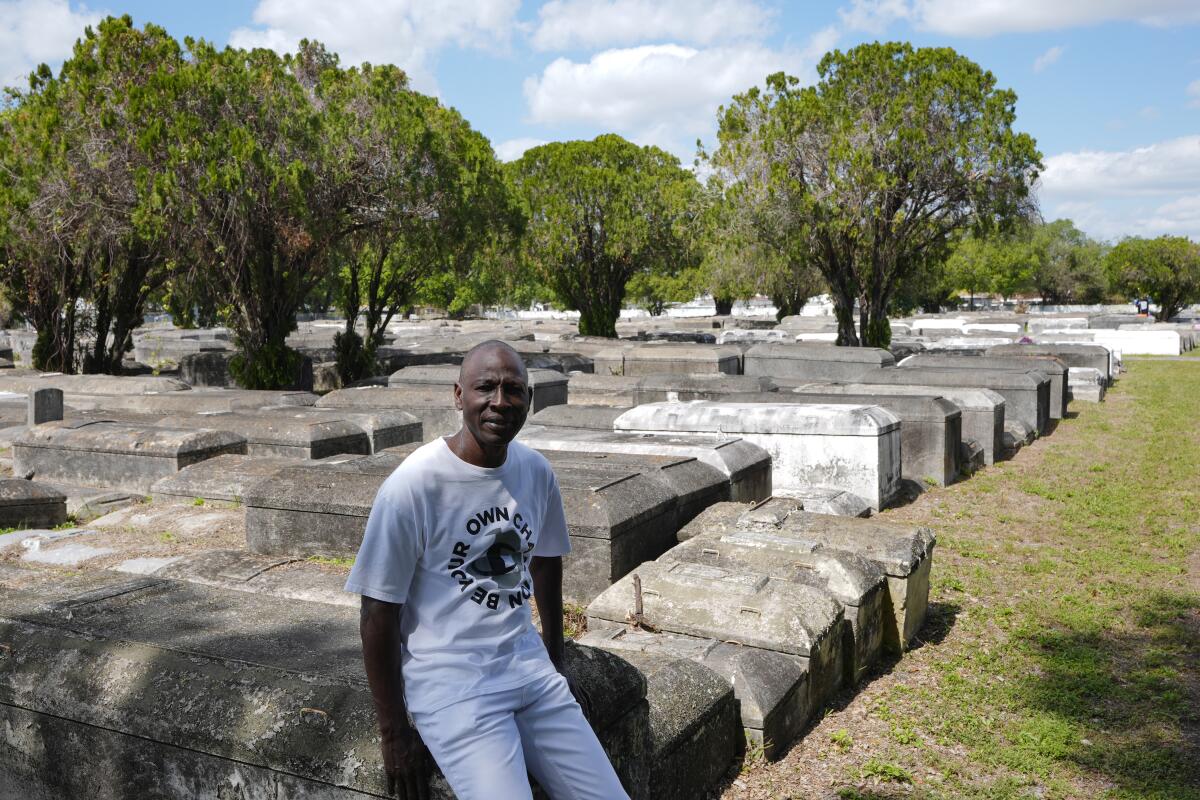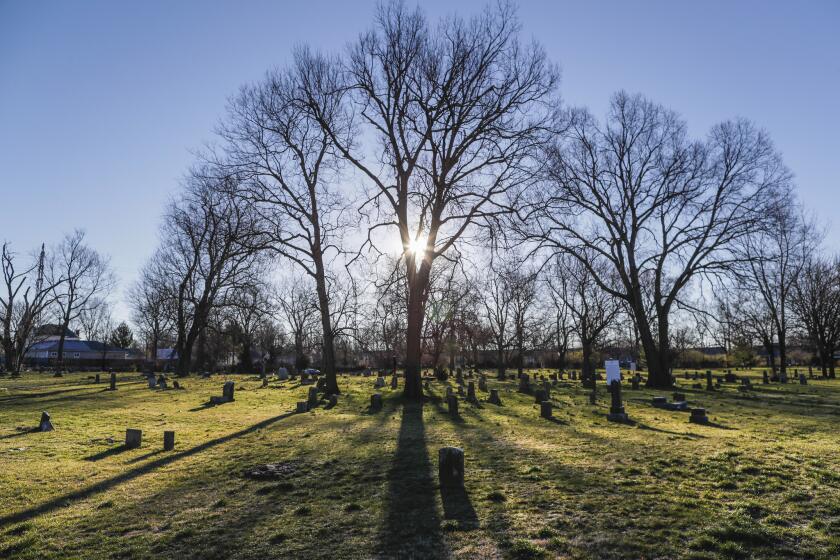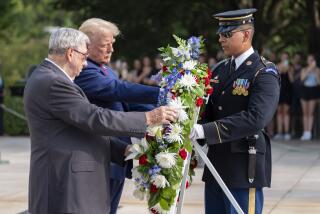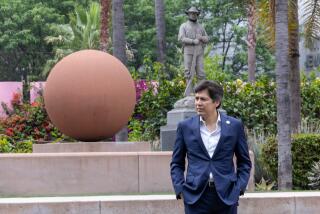As threats to Black cemeteries persist, a movement to preserve their sacred heritage gains strength

MIAMI — Neglect, abandonment and destruction have been the fate of thousands of segregated cemeteries across the country where Black Americans — from former slaves to prominent politicians and business owners — were buried over many decades.
In the last few years, growing awareness and the discovery of graves underneath parking lots, schools and even an Air Force base have spurred preservation efforts among state and local governments as well as community members who want to rebuild ancestral links.
In Washington, members of a historically Black sorority recruited an expert who helped find the 1919 burial site of one of the sorority’s founders, hidden from view in an overgrown, badly neglected section of Woodlawn Cemetery.
In Miami, Jessie Wooden bought a historically segregated Black cemetery also suffering from neglect. He and his brother, Frank — who works as caretaker — have a powerful motive for trying to restore the cemetery: It houses the gravesite of their mother, Vivian, who died when Jessie was an infant.
“When we got here it looked like a jungle,” Frank Wooden said. “Some people had to jump the fence to get in to see their loved one.”
When sites of sacred cultural memory are desecrated, it adds additional trauma to the indignity of being segregated even in death, said Brent Leggs. He is executive director of the African American Cultural Heritage Action Fund and senior vice president of the National Trust for Historic Preservation.
Those groups have played major roles in bringing awareness to the threats to cemetery preservation, such as vandalism, abandonment, ownership disputes and development. The groups provide technical expertise, as well as legal and preservation advocacy.
“There’s growing awareness among the public that cemeteries are not these haunted, scary places, but they are parks to be experienced as sites of reflection and commemoration,” Leggs said.
At Lincoln Memorial Park Cemetery in Miami’s Brownsville neighborhood, community members now stop by to say thanks and bring cold water to workers who are weeding, cleaning and repainting crypts, some dating to the late 19th century.
After Jessie Wooden serendipitously met an aunt when he was in his late 40s and learned about his mother’s resting place, he tried to visit but found the vast graveyard overgrown, snake-infested and surrounded by debris.
Now, when he comes to work, he walks past the crypts and spreading banyan trees to pray at his mother’s grave.
“All my life I didn’t know her. All I knew was that mom was gone,” Wooden said. “For me to be able to come where she’s resting at and be able to just to say a little prayer and talk to her, oh, that means so much to me.”
Marvin Dunn, professor emeritus at Florida International University and historian of race relations in Florida, remembers childhood visits to his great-grandmother’s grave for yearly spring clean-ups, when he helped out marking the site with Coke bottles.
“It was the ritual,” Dunn said. “My grandmother, especially, would not have allowed that grave not to be cleaned once a year.”
Dunn’s great-grandmother’s burial grounds belonged to a church, and those cemeteries have been more likely to survive, he said. But where entire communities were uprooted, privately owned cemeteries on newly valuable land were often sold to developers with little to no objection — leading to hundreds of thousands of Black graves that might never be found again.
“Where we bury our dead remains a part of our history, a part of our lives, a part of our souls,” Dunn said. “Not knowing where your ancestors are at, you can’t have that connection ... And that’s a tragic loss.”
In 2022, Congress passed the African-American Burial Grounds Preservation Act as a program within the National Park Service; efforts are ongoing to ensure funding. Last year, Florida passed a bill to fund restoration of historic Black cemeteries. Dunn says the state should also help families gain access to privately owned graveyards.
“Dignity is the biggest thing,” said Antoinette Jackson, a professor at the University of South Florida. She leads the African American Burial Ground & Remembering Project in the Tampa area, where Black cemeteries were discovered in recent years under a corporation’s parking lot and a school’s campus.
Elsewhere in Tampa, an estimated 800 graves of Black people remain from Zion Cemetery, founded in 1901 as the city’s first burial ground for Black people. The Tampa Housing Authority is redeveloping a housing complex built atop some of the graves, said Leroy Moore, the authority’s chief operating officer.
Use of ground-penetrating radar confirmed the graves’ location, leading to closure of five buildings over the burial ground, relocation of 32 families and efforts to preserve the area and create a genealogy research center.
“You’ve got to know your history,” Moore said.
In Miami, the Wooden brothers are trying to restore those family and community ties one crumbling gravesite at a time.
“People can be proud, you know, where their loved ones are buried at. And they can be … proud to come and visit again,” Jessie Wooden said as Frank painstakingly brushed dirt off a nearby crypt. “We’re open, we’re visiting, we’re burying, I mean, we’re getting things done.”
In Washington, in the summer of 2018, members of the Delta Sigma Theta sorority were trying to get things done — namely to locate the final resting place of one of its 22 founding members, Edna Brown Coleman.
The tragic circumstances of Brown Coleman’s death in September 1919 had been uniquely woven into the sorority’s legacy. According to its lore, Edna Brown held some of the first meetings in her living room before graduating from Howard University at the top of her class.
She met and fell in love with Frank Coleman, a founder of the Omega Psi Phi Fraternity, and became pregnant, but died while giving birth, along with the baby. They were buried together.
Since then, the Colemans’ story has lived on. A marriage between members of the two organizations is dubbed a “Coleman Love” story. But the whereabouts of Brown Coleman’s burial site remained a mystery.
To find it, the sorority tapped Marjorie Kinard, resident historian of Washington’s alumni chapter of Delta Sigma Theta who first pledged as a student at historically Black Livingstone College in the 1960s.
“When I hung up the phone, I got right on it,” she said.
Kinard quickly confirmed that Brown Coleman was buried at Woodlawn Cemetery in Washington.
Opened in 1895, Woodlawn contains about 36,000 burial sites, many of them prominent Black Americans, such as Blanche K. Bruce, a U.S. senator from Mississippi from 1875 to 1881, and playwright and educator Mary Powell Burrill.
But once volunteers opened the gates for a small contingent of sorority members to find their forebear, Kinard’s awe turned to dread. The grass was overgrown, with shrubbery and weeds that hadn’t been cut in months, or even years. Some tombstones were strewn about haphazardly.
Desecration is an unfortunate reality, such as in the case of Moses Macedonia African Cemetery in Bethesda, Md. Advocates of the Bethesda African Cemetery Coalition are mired in a legal battle to keep a developer from selling the land on which the cemetery once stood. The case is being weighed in the Maryland Supreme Court.
In the town of Roslyn, N.Y., on Long Island, a librarian named Carol Clarke recently found the site where members of the Salem African Methodist Episcopal Church had been reinterred after a wealthy family purchased a plot of land to build a chicken coop in 1899.
At Woodlawn, hidden beneath the shrubbery overgrown over Brown Coleman’s tombstone was the revelation that the sorority founder’s full name was Mary Edna Brown Coleman.
Soon it was discovered that two founders of the Alpha Kappa Alpha sorority — Sarah Meriwether Nutter and Marjorie Arizona Hill — were also interred at Woodlawn. Kinard reached out to another sorority leader, and together they began Woodlawn Collaborative Project, an initiative designed to ensure that the grounds are never again neglected.
“We were just happy that the cemetery was alive and well,” Kinard said.
Associated Press writer Dell’Orto reported from Miami, Sands from Washington. AP reporter Curt Anderson contributed from Tampa.
More to Read
Sign up for Essential California
The most important California stories and recommendations in your inbox every morning.
You may occasionally receive promotional content from the Los Angeles Times.











